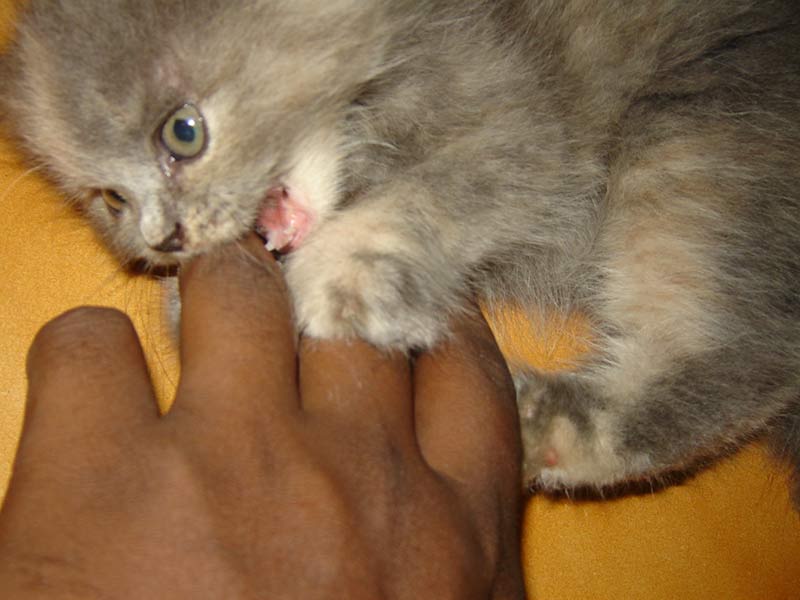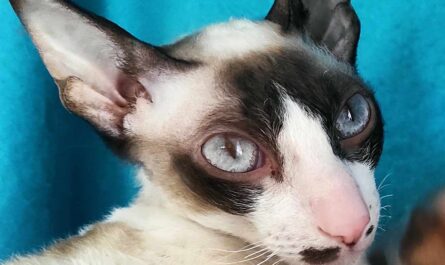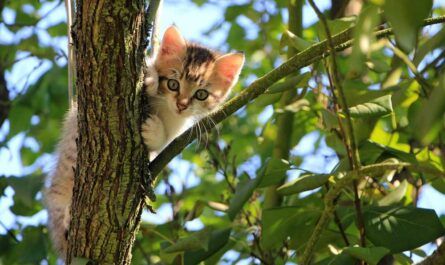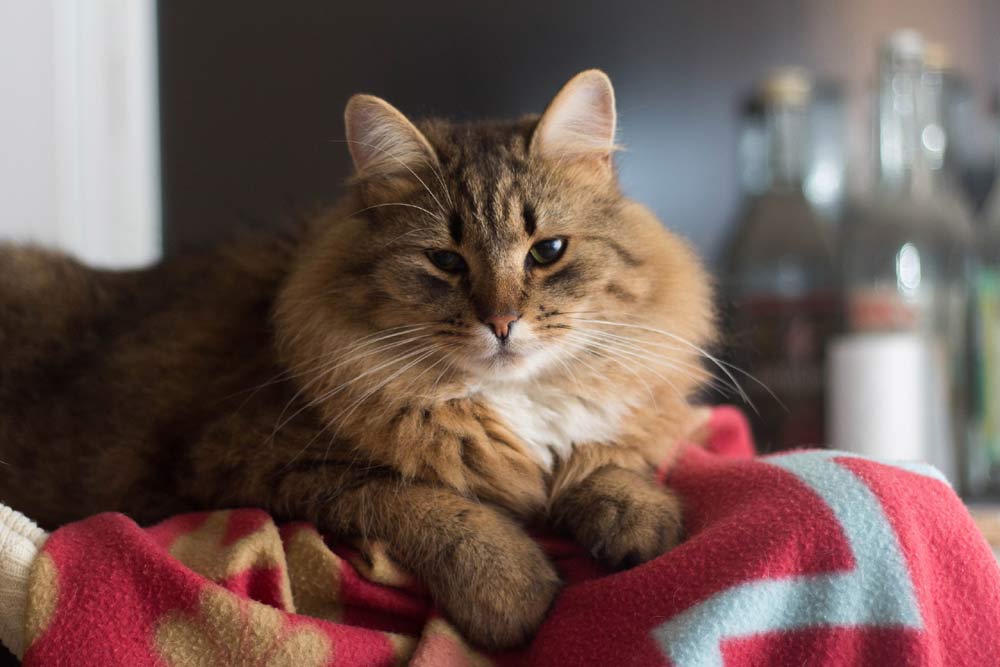Why do cats arch their backs often? Cats, those enigmatic and graceful creatures, often exhibit behaviors that pique our curiosity. One such behavior is the arching of their backs, a gesture that can seem both elegant and intimidating. Understanding why cats arch their backs can provide insight into their communication and instincts. Below, we delve into 13 reasons behind this fascinating feline behavior.
Why Do Cats Arch Their Backs Often? Possible Reasons
The act of back arching in cats is a multifaceted behavior that serves various purposes ranging from communication to physical health and emotional expression. Whether it’s a response to fear, a stretch after a nap, or a playful invitation, understanding the reasons behind this behavior can deepen our appreciation for these fascinating feline companions. By observing and interpreting their body language, we can better respond to their needs and strengthen the bonds of companionship between humans and cats. As we continue to unravel the mysteries of cat behavior, we gain valuable insights into the rich and complex inner world of our beloved pets.
1. Sign of Contentment and Relaxation
Contrary to prevailing beliefs, not all instances of back arching in cats denote aggression or fear; indeed, many times, it serves as a poignant expression of contentment and relaxation. When a cat finds itself in a state of utter bliss, whether basking in the warmth of a sunbeam or reveling in the affectionate caresses of its human companion, it may luxuriously stretch out its body and arch its back in a display of sheer satisfaction. This behavior mirrors the human experience of a contented sigh or a gentle stretch upon waking, signifying that the cat is wholly at ease, comfortable, and deeply content in its environment.
Blissful Expression: The graceful arching of a cat’s back during moments of contentment and relaxation is akin to a symphony of bliss, a visual ode to their utter contentment and serenity. In these tranquil moments, cats find solace and joy in the simple pleasures of life, exuding an aura of peaceful contentment that warms the hearts of those fortunate enough to witness it.
Symbol of Comfort: A cat’s back arching in a stretch of satisfaction serves as a powerful symbol of comfort and well-being, a testament to the harmonious bond between feline and human companions. In this state of blissful repose, cats revel in the warmth and security of their surroundings, basking in the love and affection showered upon them by their devoted caretakers.
2. Preparation for Play or Pounce
In the intricate tapestry of feline behavior, back arching emerges as a versatile and multifaceted gesture, often signaling a cat’s readiness to engage in play or hunt. With instincts honed by millennia of evolution, cats are natural-born hunters, their predatory prowess finely attuned to the art of stalking and pouncing. When a cat arches its back, it may be a subtle indication of its intent to unleash its hunting instincts and embark on a playful pursuit. This behavior is particularly evident in kittens during spirited play sessions, as they engage in mock battles with siblings or toys, honing their hunting skills in preparation for the challenges that lie ahead. By arching their backs, cats prime their bodies for action, gathering energy and preparing their muscles for swift movements and agile leaps essential for successful hunting or playful antics.
Expression of Readiness: The graceful arch of a cat’s back serves as a silent proclamation of readiness, signaling its intent to engage in playful pursuits or unleash its hunting instincts. In this poised posture, cats gather energy and focus their attention, preparing for the exhilarating adventures that await them.
Harnessing Instincts: Back arching is a manifestation of a cat’s innate hunting instincts, deeply ingrained behaviors honed through millennia of evolution. By engaging in playful stretches and arching their backs, cats tap into their primal instincts, channeling the spirit of their wild ancestors as they prepare to embark on spirited play or pursue elusive prey.
3. Instinctual Response to Fear or Threat
When a cat arches its back, it engages in a primal and instinctual response rooted deep within its evolutionary history. This behavior, reminiscent of their days as agile hunters in the wild, is triggered by a perceived threat or fear, activating a cascade of defensive mechanisms designed to ensure survival. By arching their backs, cats adopt a posture that makes them appear larger and more imposing, a visual deterrent to potential predators or threats. This defensive stance is further enhanced by the puffing up of their fur, creating an illusion of increased size and ferocity. Through these instinctual responses, cats assert dominance and signal to potential aggressors that they are prepared to defend themselves against any perceived danger.
Primal Defense Mechanism: Arching the back is a primal and instinctual response to fear or threat, deeply ingrained in a cat’s nature as a survival strategy. By adopting this defensive posture, cats assert dominance and deter potential predators or threats, signaling their readiness to defend themselves if necessary.
Visual Deterrent: The arching of the back, combined with the puffing up of fur, creates a formidable visual deterrent to potential aggressors, making the cat appear larger and more imposing. This defensive display serves as a warning signal, deterring threats and reducing the likelihood of confrontation.
4. Stretching and Flexing Muscles
In addition to its role as a defensive mechanism, arching the back serves as a vital component of a cat’s physical maintenance and well-being. Much like humans engage in stretching exercises to limber up and maintain flexibility, cats use this posture to stretch and flex their muscles, promoting overall health and mobility. The arching motion allows cats to extend their spine and stretch the muscles along their back, promoting circulation and preventing stiffness. For indoor cats, who may spend long hours lounging or napping, this stretching behavior is crucial for maintaining physical health and agility, ensuring they remain limber and mobile even in the confines of their indoor environment.
Physical Maintenance: Arching the back serves as a form of physical maintenance for cats, allowing them to stretch and flex their muscles to maintain flexibility and mobility. This stretching motion promotes circulation and prevents stiffness, contributing to overall physical health and well-being.
Importance of Stretching: For indoor cats, who may have limited opportunities for physical activity, stretching behaviors such as arching the back are essential for maintaining optimal health and agility. Regular stretching helps prevent muscle stiffness and promotes flexibility, ensuring that cats remain limber and mobile even in the absence of outdoor exploration.
5. Sensory Stimulation and Marking Territory
A cat’s back serves as a canvas of sensory exploration, lined with sensitive nerve endings that respond to touch and pressure. When a cat arches its back against various surfaces, be it furniture or a human’s leg, it seeks tactile feedback and sensory stimulation. This ritualistic act can be akin to a luxurious massage, eliciting pleasurable sensations as the cat revels in the pressure and texture of rubbing against objects. Moreover, cats possess scent glands along their backs, and the act of arching serves as a means of territorial marking, leaving behind subtle traces of pheromones to assert ownership over objects or areas within their domain. Through this dual process of sensory gratification and territorial assertion, cats reinforce their sense of security and belonging in their environment, establishing boundaries and claiming ownership over cherished possessions.
Sensory Exploration: The act of arching provides cats with tactile feedback and sensory stimulation, eliciting pleasurable sensations akin to a gentle massage. By rubbing against objects, cats engage in a ritualistic form of self-expression, exploring their surroundings and marking their territory with subtle traces of scent.
Territorial Assertion: Arching the back serves as a subtle yet potent form of territorial marking, allowing cats to assert ownership over objects or areas within their environment. Through the deposition of pheromones, cats communicate their presence and establish boundaries, reinforcing their sense of security and belonging.
6. Curiosity and Investigation
At the heart of a cat’s behavior lies an insatiable curiosity that propels it to explore and investigate the world around it. When confronted with novel stimuli or unfamiliar objects, a cat’s natural inclination is to approach cautiously, combining curiosity with caution in a delicate dance of exploration. Arching the back becomes a pivotal component of this investigative repertoire, allowing the cat to maintain a posture that signifies readiness for action while appearing more formidable to potential threats. This blend of curiosity and caution is essential for a cat’s survival, whether navigating the complexities of indoor living or venturing into the uncharted territories of the great outdoors. By harnessing their innate instincts for exploration and self-preservation, cats embark on a journey of discovery, enriching their lives with each new encounter and experience.
Inquisitive Nature: Cats are renowned for their insatiable curiosity, which drives them to investigate new sights, sounds, and scents with unparalleled zeal. Arching the back becomes a natural expression of this curiosity, allowing cats to approach unfamiliar stimuli cautiously while maintaining a posture that signifies readiness for exploration.
Blend of Curiosity and Caution: The act of arching the back embodies a delicate balance between curiosity and caution, essential for a cat’s survival in diverse environments. By combining their innate sense of curiosity with a vigilant awareness of potential threats, cats navigate the complexities of their surroundings with grace and adaptability, enriching their lives through exploration and discovery.

7. Playful Invitation to Interaction
When cats are in a playful mood, they employ back arching as a charming invitation to interact with their human companions or fellow felines. This endearing behavior is typically accompanied by an array of playful gestures, including batting at objects, emitting playful chirps, or engaging in spirited bouts of chasing imaginary prey. By arching their backs and assuming a playful stance, cats communicate their eagerness to partake in lighthearted activities and socialize with others. For cat owners attuned to their pets’ cues, responding to these invitations with enthusiasm and active participation can deepen the bond between human and feline, cultivating a sense of joy and companionship that enriches both their lives.
Expressive Playfulness: Back arching serves as an expressive gesture of playfulness in cats, signaling their readiness to engage in fun and interactive activities. Coupled with other playful behaviors, such as batting at objects or emitting playful chirps, this invitation fosters a delightful atmosphere of shared enjoyment and companionship.
Strengthening Bonds: Responding to a cat’s playful invitations with enthusiasm and active engagement strengthens the bond between human and feline. By embracing these moments of lighthearted interaction, cat owners nurture a sense of joy and companionship that transcends language barriers, fostering a deep and enduring connection with their furry companions.
8. Expression of Excitement or Anticipation
While cats are creatures of habit, they also delight in moments of excitement and anticipation, reveling in the anticipation of pleasurable experiences. Whether it’s the familiar sound of a can opener heralding mealtime or the sight of a beloved toy, cats may arch their backs in eager anticipation. This behavior reflects their heightened state of arousal and eagerness to engage with stimuli that bring joy and satisfaction. The arching of the back serves as a physical manifestation of the cat’s excitement, signaling to observers that something noteworthy is about to unfold. For cat owners, recognizing these cues can deepen their understanding of their pet’s preferences and enhance their ability to provide enriching experiences that nurture their bond.
Eager Anticipation: Arching the back signifies a state of eager anticipation in cats, reflecting their excitement and enthusiasm for forthcoming experiences. Whether awaiting mealtime or playtime, cats express their delight through subtle yet unmistakable gestures, enriching their lives and fostering a deeper connection with their human companions.
Enhanced Bonding Opportunities: By understanding and responding to their cat’s expressions of excitement and anticipation, owners can cultivate deeper bonds and shared experiences. Whether through engaging play sessions or rewarding interactions, recognizing these cues allows caregivers to tailor their interactions to meet their cat’s needs, fostering mutual enjoyment and companionship.
9. Seeking Attention or Affection
Despite their reputation for independence, cats harbor a deep-seated desire for attention and affection from their human companions. When a cat arches its back and rubs against a person’s legs or extends its body upward in a stretched-out posture, it is often a clear indication of their longing for interaction and affection. This behavior, accompanied by purring, meowing, or gentle head-butting, serves as a form of communication aimed at eliciting a response from their human counterparts. By engaging in such displays of affection, cats seek to forge bonds with their caregivers and establish a sense of closeness and trust. These moments of connection and intimacy are cherished aspects of the relationship between cat and owner, fostering a deep bond built on mutual love and companionship.
Longing for Interaction: When a cat arches its back and seeks physical contact with their human companion, it is a clear indication of their desire for attention and affection. This behavior, accompanied by vocalizations and gentle gestures, serves as a heartfelt plea for companionship and connection.
Communication through Actions: Through gestures such as rubbing against legs and stretching upward, cats communicate their need for interaction and affection in a language that transcends words. By engaging in these displays of affection, cats express their love and appreciation for their human caregivers, forging bonds that enrich both their lives and the lives of those around them.
10. Mimicry of Mother Cat Behavior
In the formative stages of life, kittens learn essential behaviors by observing and imitating their mother cat. Among these learned behaviors is the arching of the back, a gesture that holds significant meaning in feline communication. Kittens may mimic their mother’s actions during play or social interactions, using the arching of the back as a form of nonverbal communication to convey messages of playfulness, submission, or readiness for interaction. As they mature and transition into adulthood, cats may continue to exhibit this behavior as a remnant of their early learning experiences, serving as a poignant reminder of their bond with their mother and littermates.
Early Learning Experiences: Kittens learn crucial behaviors by observing and imitating their mother cat, including the arching of the back. This behavior serves as a form of nonverbal communication, allowing kittens to navigate social interactions and convey their intentions effectively.
Remnant of Childhood: As cats mature into adulthood, they may retain certain behaviors learned during their formative stages, such as the arching of the back. This behavior serves as a nostalgic reminder of their bond with their mother and littermates, highlighting the enduring influence of early learning experiences on their adult behavior.
11. Response to Pain or Discomfort
While cats are known for their stoic demeanor, they may exhibit back arching as a response to pain or discomfort. This behavior can be a subtle yet significant indicator of underlying health issues, ranging from musculoskeletal problems to digestive disturbances. When experiencing discomfort, cats may adopt a hunched posture to alleviate pressure on sensitive areas or to signal distress to their caregivers. Observant cat owners should remain vigilant for any changes in their pet’s behavior, including alterations in posture or mobility, as these could be early warning signs of an underlying medical condition. Prompt veterinary attention is essential for diagnosing and addressing the source of the cat’s discomfort, ensuring their health and well-being.
Indicators of Discomfort: Back arching in cats can signify underlying health issues, such as musculoskeletal problems or digestive disturbances. This behavior serves as a subtle yet crucial indicator of pain or discomfort, prompting caregivers to seek prompt veterinary care for their furry companions.
Importance of Observation: Observant cat owners play a vital role in identifying signs of pain or discomfort in their pets. By monitoring changes in posture, mobility, and behavior, caregivers can promptly address any health issues and ensure the optimal well-being of their beloved feline companions. Health books, guides, exercises, habits, Diets, and more
12. Expression of Dominance or Submission
In the intricate social dynamics of multi-cat households or feral cat colonies, back arching emerges as a form of nonverbal communication related to dominance and submission. When cats encounter each other, they engage in a complex interplay of postures and vocalizations to establish hierarchy and maintain social order. A dominant cat may arch its back in a display of confidence and assertiveness, asserting its status within the group, while a submissive cat may respond by lowering its body and avoiding direct eye contact to signal deference. These subtle yet potent nonverbal cues help prevent conflicts and aggression, allowing cats to coexist harmoniously within their social groups and navigate their intricate social hierarchies with grace and agility.
Social Signaling: Back arching serves as a form of social signaling among cats, allowing them to convey messages of dominance or submission to their peers. Through a nuanced interplay of postures and gestures, cats establish and maintain social order within their communities, fostering cooperation and mutual respect.
Promotion of Harmony: By engaging in nonverbal communication, such as back arching, cats minimize conflicts and promote harmony within their social groups. These subtle cues allow cats to navigate their complex social hierarchies with finesse, ensuring peaceful coexistence and cooperation among peers.
13. Response to Environmental Changes
Cats possess a remarkable sensitivity to changes in their environment, responding acutely to alterations in their surroundings, whether subtle or significant. The introduction of a new pet, a rearrangement of furniture, or a shift in routine can all elicit a response from feline companions. When confronted with unfamiliar or stressful situations, cats may instinctively arch their backs as a coping mechanism. This behavior serves as a means of seeking comfort and security amidst uncertainty, allowing cats to assert a sense of control over their surroundings. By assuming a defensive posture, cats may also feel more prepared to confront potential threats or challenges presented by the changing environment. Understanding and acknowledging a cat’s need for familiarity and routine can empower caregivers to provide support and reassurance during times of transition or upheaval, fostering a sense of stability and well-being for their feline companions. Cat accessories on Amazon
Adaptive Coping Mechanism: Arching the back serves as an adaptive coping mechanism for cats faced with environmental changes, allowing them to assert control and seek comfort amidst uncertainty. By assuming a defensive posture, cats navigate unfamiliar situations with grace and resilience, finding solace in their ability to adapt to evolving circumstances.
Seeking Stability and Security: In times of upheaval, cats instinctively seek stability and security within their surroundings. Arching the back serves as a physical expression of this innate need, providing cats with a sense of grounding and reassurance amidst the chaos of change. Through this subtle yet profound gesture, cats assert their presence and resilience, reaffirming their place within the home environment.
Other Interesting Articles
- How to Help Your Cat Overcome Fears in 13 Strategic Steps
- 13 Easy Tricks To Teach Your Cat: Basic Feline Training Guide
- How To Train Your Cat: 15 Easy Steps To Teach New Things
- Why Do Cats Have Tails? 4 Fun Facts You Didn’t Know
- 16 Simple Ways To Establish A Stronger Bond With Your Cat
- How To Train Your Cat/Kitten To Sit: Steps, Command, Guide
- Cat Giving Birth: From Your Feline Pregnancy to Kitten Care
- Fading Kitten Syndrome: Age, Causes, Symptoms, Treatment
- Kitten Bottle Feeding: Chart, Tips, Recipe, Challenges, Guide
- Cat Pregnancy: Timeline, Signs, Labor, Behavior, Stages
- 16 Silent Killers of Cats Every Pet Owner Must Be Aware Of
- Do Mother Cats Discipline Their Kittens? A Guide To Owners
- How To Take Care of A Kitten 6 Weeks Old: A 7-Step Guide
- How To Tell If Your Cat is Trying to Hurt You: A To-Do Guide
- How To Tell If Your Cat Has Tapeworms: What You Can Do
- How To Tell If My Cat is in Pain After Neutering: What To Do
- How To Get A Cat To Trust You Fast: Signs, Tips, Techniques
- 12 Signs Your Cat is a Boy: Tips To Distinguish A Male Cat
- Single Kitten Syndrome: Age, Signs, Symptoms, Treatments
- How To Tell If Your Cat Can’t See Well: What You Can Do



